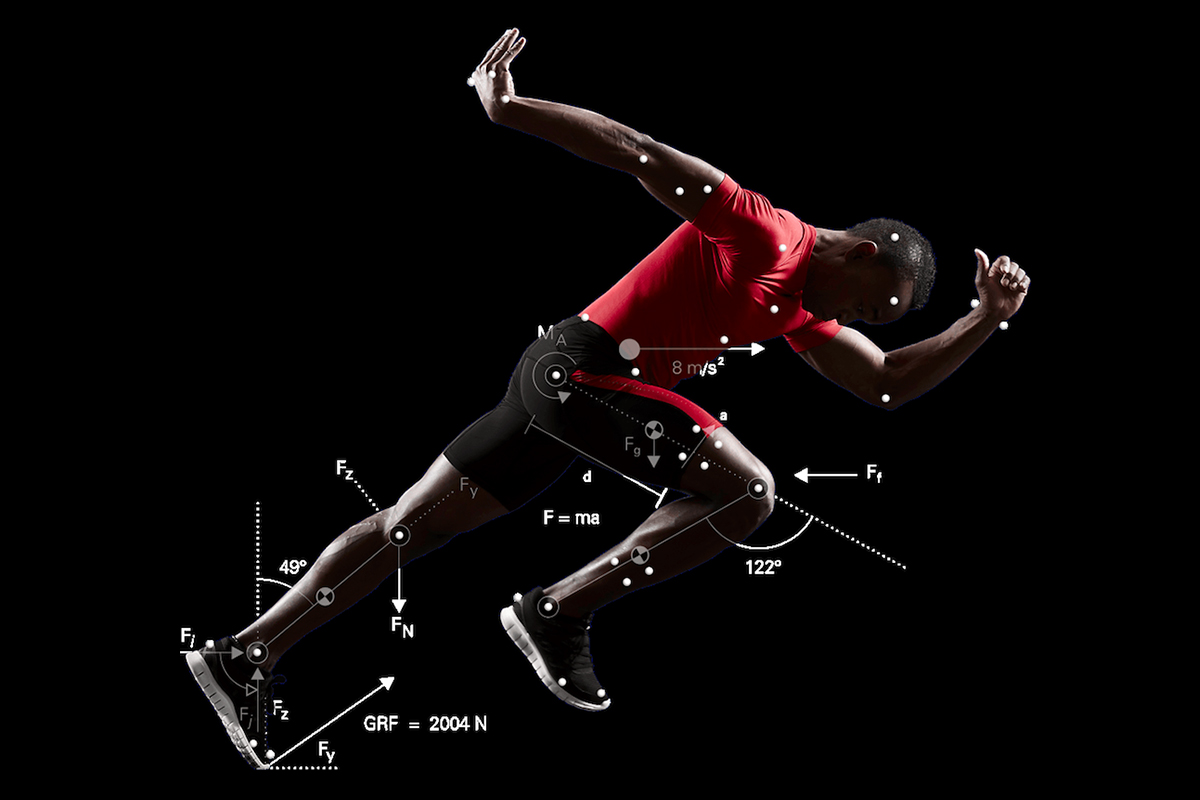
What is biomechanics? Why is it important for tennis and sport in general? How will it help improve your game and overall wellbeing? These are a few of the questions I’ll be answering in this primer on sports biomechanics…
What is biomechanics?
In short biomechanics is the study and science of how the system and structure of biological organisms react to external forces and stimuli. It’s a broad field that includes many subfields including musculoskeletal biomechanics, kinesiology and sports biomechanics to name a few.
When it comes to you and me, biomechanics normally refers to how the muscular and skeletal systems in humans function under various conditions. A biomechanic will apply engineering principles, physics and other types of mathematically based forms of analysis to learn the capabilities and limits of the human body.
How can biomechanics be used in sports?

Sports biomechanics is a subfield within biomechanics and is its own branch of human and biological science. Essentially sport and exercise biomechanics is focused on analysing the physiological mechanics of human movement. This includes analysis of how forces interact and the effects these forces have on and within the body. In other words biomechanics in sports examines and explains why and how the human body moves like it does. In a sport like tennis this also includes the interplay between an athlete, their environment and the equipment.
Generally the primary goals of sports biomechanics are:
- Improve athletic performance by identifying and applying optimal technique.
- Prevent injury and speed up recovery.
The benefits of biomechanics.

Basically, understanding biomechanics and applying it is the foundation for good technique in all sports. So by studying how the human body naturally wants to move we can remove stress and pressure on the bones, joints, muscles and ligaments. This results in improved athletic performance, reduced injuries and heightened general wellbeing. Athletes of all ages and skill levels can benefit from biomechanical analysis whether it’s for pain reduction or to increase top level performance. Here are some more benefits of proper biomechanics:
- Increased movement speed (running, swimming, etc.)
- More power (jumping, hitting, lifting, etc.)
- Energy conservation through economy of movement.
- Helps eliminate muscle imbalances.
- Reduces wear and tear on joints and ligaments.
- Improved sport specific form and technique.
In a nutshell, with good biomechanics you can get faster and stronger while reducing injuries.
Why don’t all tennis coaches teach sports biomechanics?

The odds are that most coaches and organizations, especially within the tennis community, don’t even know what biomechanics is. Or if they do, they don’t truly understand it and don’t want you to know about it. Because if you did understand biomechanics and its benefits you’d demand they coach you with this in mind. This would require your coach to admit that much of what he/she teaches is wrong. This in turn would force him/her to go back to the drawing board and relearn everything. Generally speaking this is way too much effort for the average coach. It’s a shame because a stronger focus on biomechanics and good technique would save people from a lot of pain while helping them improve their game.
I learned the hard way so you don’t have to.

I have had an unusual amount of injuries through my tennis career. Back, knees, achilles, shoulder, you name it and I’ve probably had surgery there. It’s a regret that I did not have this information during my professional tennis career. It would have saved me from so many injuries and extended my career. Late in my professional career I made the decision to changed my entire technique and adopt the principles of biomechanics to prevent further injury so I could continue competing. This change has allowed me to stay healthy, improve my game, and continue to play on the champions tour to this day. If biomechanics continues to have great benefits for a grandfather like me, imagine the potential it has to help not only the athletes of today but the average person who just wants to stay active and healthy.
Biomechanics related links and resources.
I hope this post has given you a better understanding of what biomechanics is and why it is so important to tennis. In the coming weeks I will write about specific techniques and give you biomechanically proven step-by-step guides on how to improve your tennis. In the meantime here are some links and resources If you’d like to learn more:
- Introduction to Sports Biomechanics
- Human Kinetics: Journal of Applied Biomechanics
- Elsevier: Clinical Biomechanics
- Journal of Biomechanics
- International Sports Engineering Association
- International Society of Biomechanics in Sports
- International Society of Biomechanics
- Quantification of Human Motion
- European Society of Biomechanics
- Australian and New Zealand Society of Biomechanics
- Tennis Racquet Physics
- American Society of Biomechanics
- Anatomy and biomechanics of the shoulder in throwing and tennis
- Biomechanics and Tennis
You might also like…
- The Only Book You Need On Tennis Biomechanics
- Review: The Biomechanics Of Tennis
- Tennis Forehand Technique: Straight Arm vs Bent Arm
If you enjoyed this article consider subscribing to my newsletter. You’ll get the occasional update when I post new content as well as member exclusive tips, recommendations and videos. Get access here.



